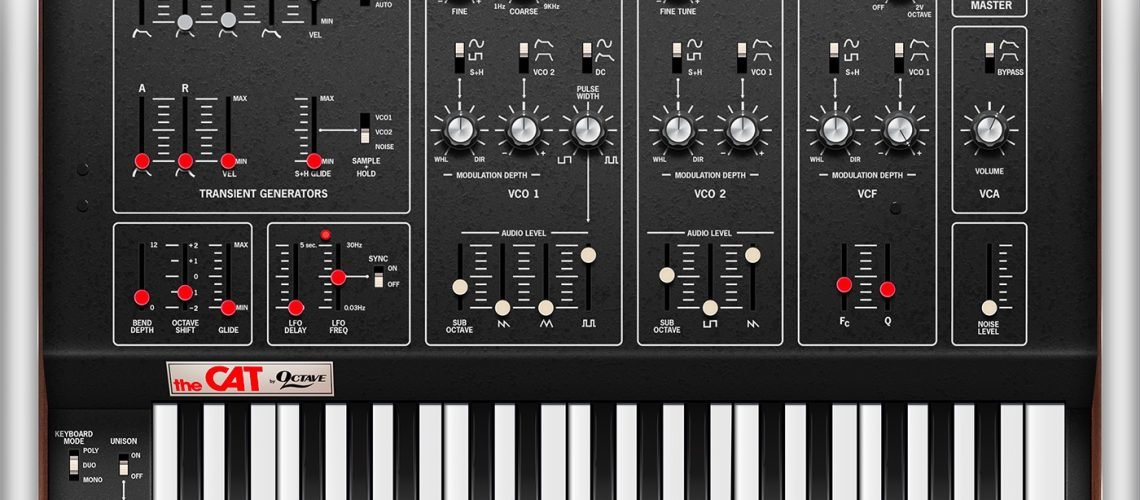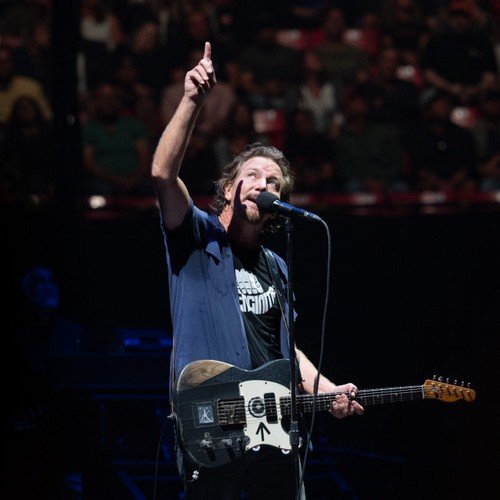It’s got growl, savage bass, an unmistakably aggressive lowpass filter, and unique-sounding cross modulation and oscillator sync. Now the CAT sound is readily accessible to anyone in plug-in form, with input directly from its original designer, Carmine Bonanno. Cherry Audio’s Octave CAT is out now.
Pictured: Carmine in the lab, 1978:
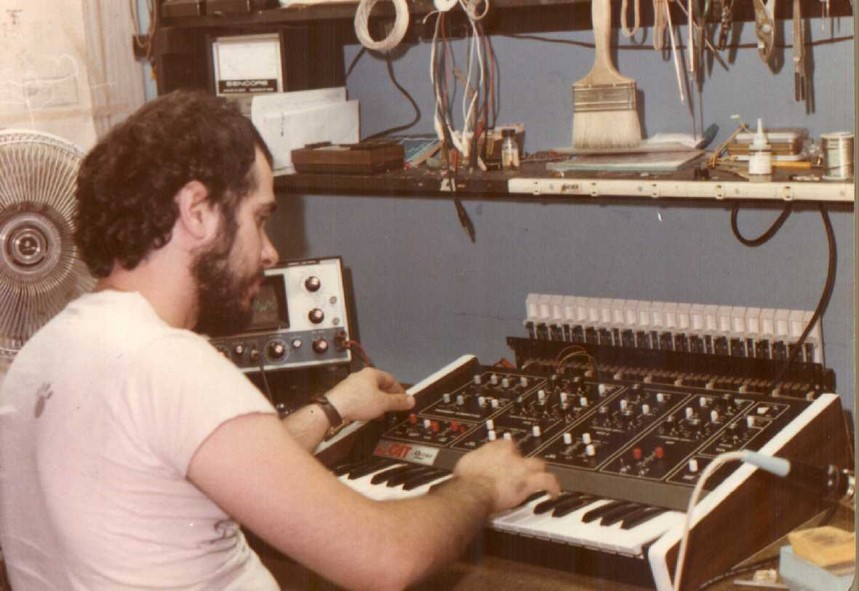
Look, let’s be honest: not every single synth is worth revisiting, even as we scrape the bottom of the barrel. Nor can every synth claim some pop hit sound that everyone wants, for what it’s worth. But the CAT from 1976 is something special – on that short list of synths that would pass the utility test to get used and reused in music making.
Why? In short, this unique budget synth created by a team led by a 22-year-old Bonanno had the right stuff – and the same holds true today:
- Dual oscillators with the ability to blend waveforms
- Frequency modulation
- Brutal cross modulation and oscillator sync
- A distinctive low-pass resonant filter
- Simple but flexible modulation
All for $599 in 1976, half of what you needed to get an ARP or Moog.
Here’s Tim Shoebridge with a complete intro:
It all adds up to something that is definitely Minimoog-esque, but also unmistakably its own sound. And ironically a big part of what makes the CAT make sense as a plug-in is its hardware panel – that is, they fit a manageable number of controls into a single layout, which translates well to hardware.
Real estate was cheaper in NYC in the 70s – that office is across from the Flatiron Building!
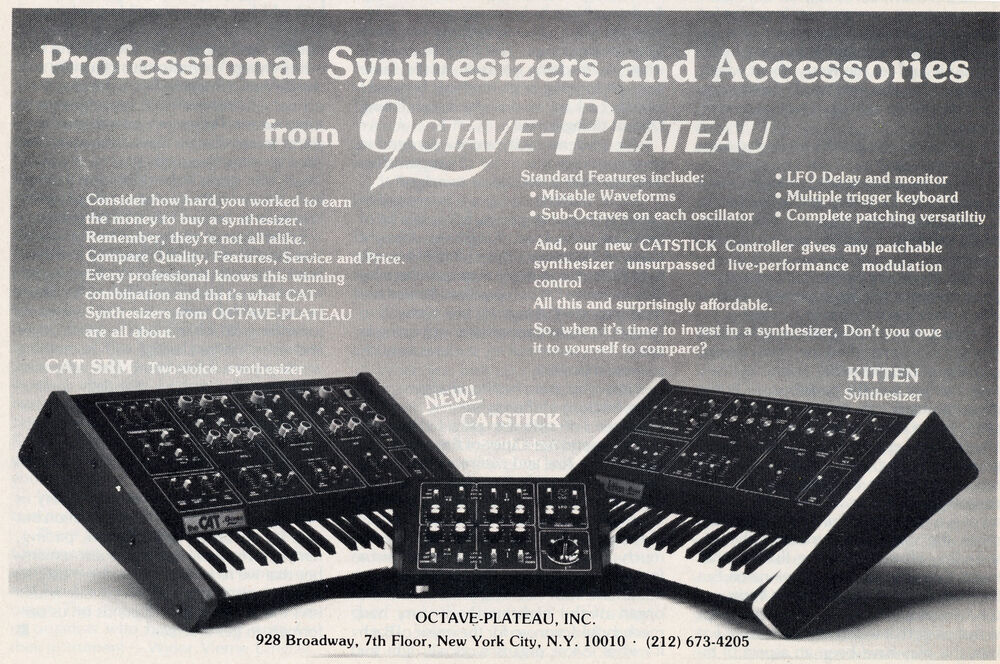
I’ve had early access to the release candidate of the plug-in and it’s just terrific – even if you’re relatively new to the CAT.
What’s nice from Cherry Audio in this case is that they’ve worked directly with the original designer, Carmine Bonanno, on the software rendition. And since it is in software form, they can also expand and update the CAT design for 2023. So that’s in contrast to any hasty clone made as hardware without the involvement of anyone who worked on the original. I mean, if — oh, wait, a cat just walked across my keyboard and knocked over the cheap Späti wine I drink while blogging and I stopped whatever I was going to say. Weird. Moving on.
So Cherry Audio give you the idiosyncrasies of the original – pictured, the main view:
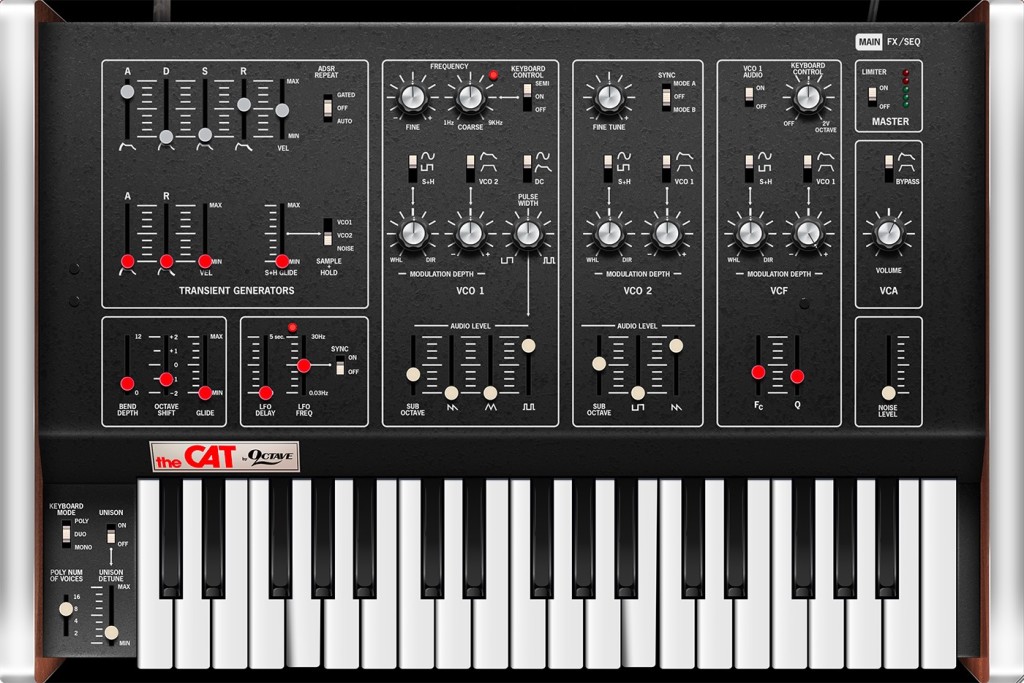
- Unison for mono/duo modes
- Models of the original VCOs
- The original (not later revised) SSM2040 “cascaded OTA” filter and the CAT’s own unique resonance – not the filter you hear on so much other hardware and software
- Original distinctive transient generator section
- Oh yeah, and Sample and Hold + Glide (for slew)
New in this update which the original CAT didn’t have, but probably would loved to have had (with the assistance of this alternate view):
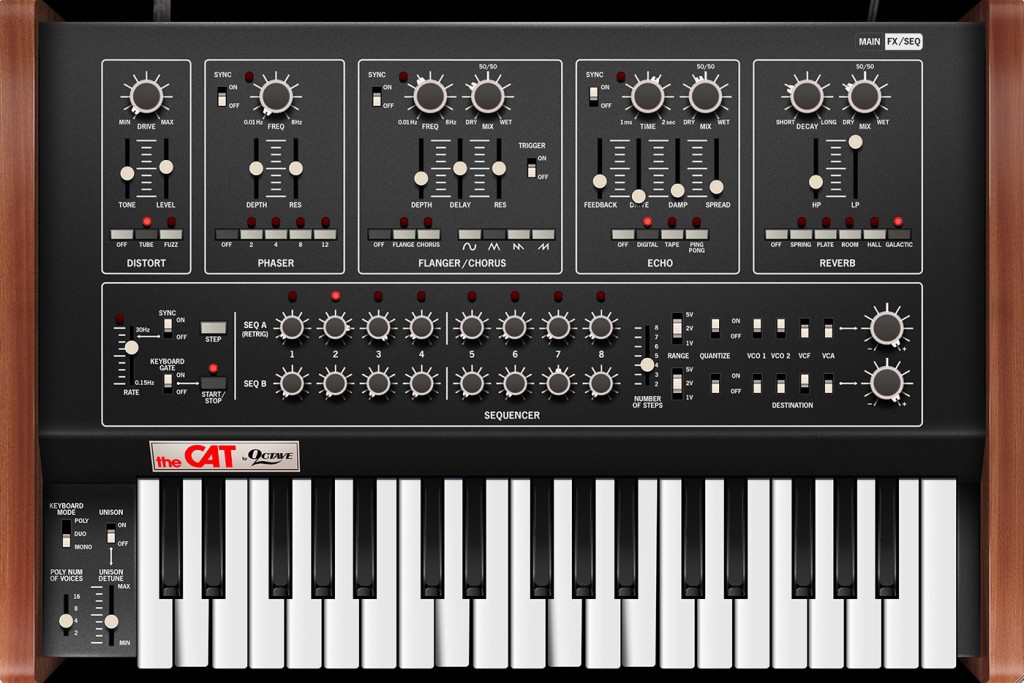
- Expanded polyphony – up to 16-voice (in addition to the original monophonic and duophonic mode)
- Integrated effects, including distortion, phaser, flanger/chorus, echo, and reverb
- Dual eight-step sequencer with modulation
- MPE support (increasingly standard)
- Sample and hold glide
- MIDI clock sync
- Preset storage (well, yeah!)
Cross modulation plus sequencer = oooh, yeah, this is a techno beast.
But don’t take my word for it; anyone can add specs on a software instrument. Listen to the creator. Carmine talks about why it’s great to have those additions – not just because you can, but because they make sense. As he says in Cherry Audio’s materials:
“It goes way beyond what a hardware CAT is capable of. For instance, on a hardware CAT, you can’t save a patch, you can’t control modulation with an external MIDI controller, you don’t have full polyphony, etc. All of this makes the Cherry Cat incredibly more versatile than a hardware CAT.”
So apologies to the used market, but that’s the creator of the darn thing saying just get the plug-in already.
That suits me. Having preset storage alone is great compositionally. Very often you wind up designing a sound, then returning to that patch later to actually make a track. Bonus – when you do, you can come back to it as a live instrument. I actually find if I take a laptop to a gig, it’s increasingly just as a synth rack – and often a rock solid one, these days. You can easily enough tuck the computer out of sight.
This is good fun even at the US$69 list, and the intro price is $49.
AU, VST, VST3, AAX, standalone, macOS (10.13+), Windows (7+) Intel, Apple Silicon, 30-day demo.
https://cherryaudio.com/products/octave-cat
More history
Perfect Circuit published a wonderful history on this instrument by Jacob Johnson, which you can honestly read as a guide to programming sounds on it, plus an accompanying video:
Octave Electronics: The Cat Synthesizer
That includes a free sample pack with sounds.
There’s also this excellent Fortress of Sound video, which includes an interview with Carmine Bonanno and the answer to the question “does it tuba?” (h/t Synthtopia):
Cherry Audio also have a new text interview with Bonanno. (The last-name spelling there seems to routinely trip everyone up. Two n’s at the end, one n at the start!)
Good stuff. Now I’m definitely off to play with this more.
